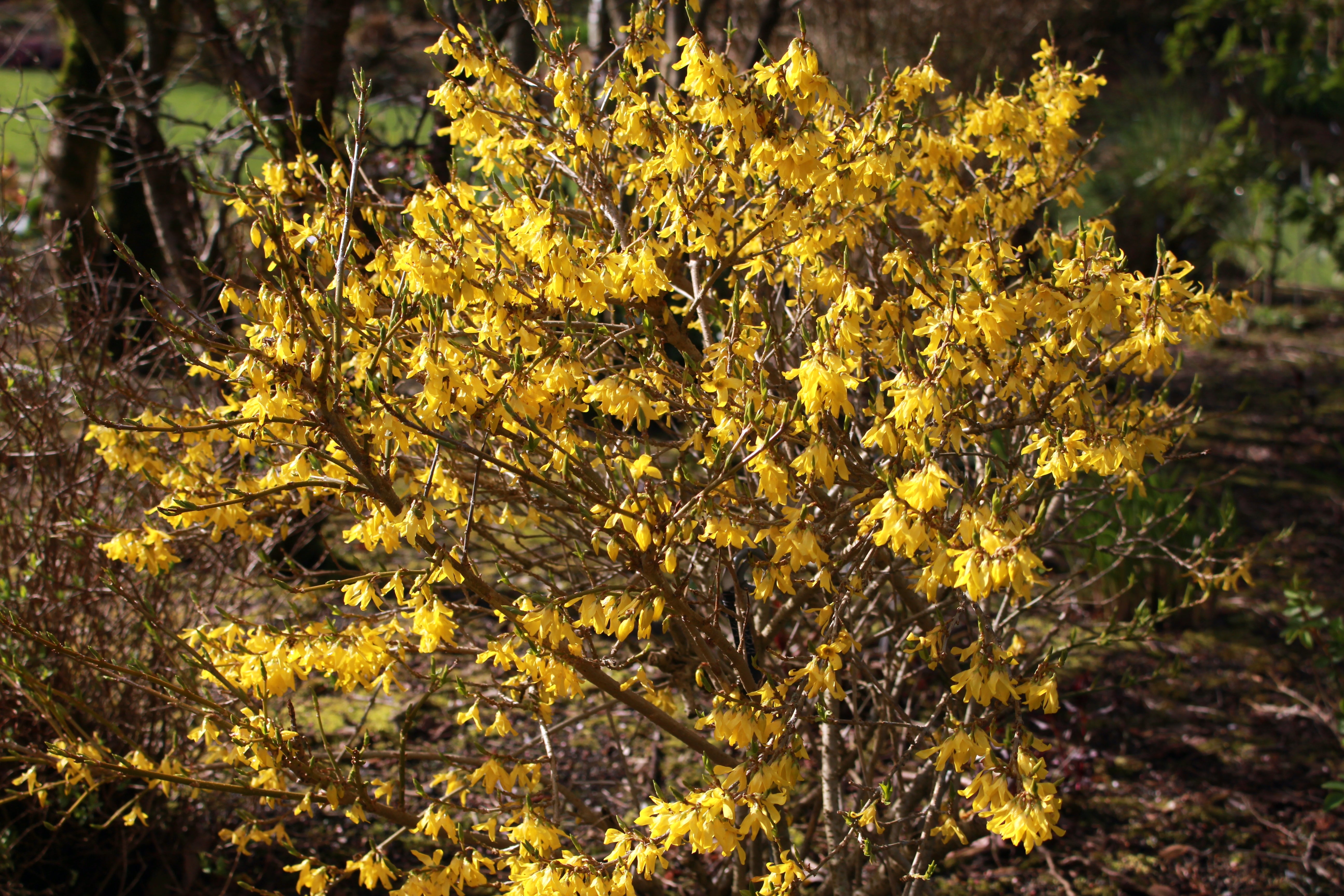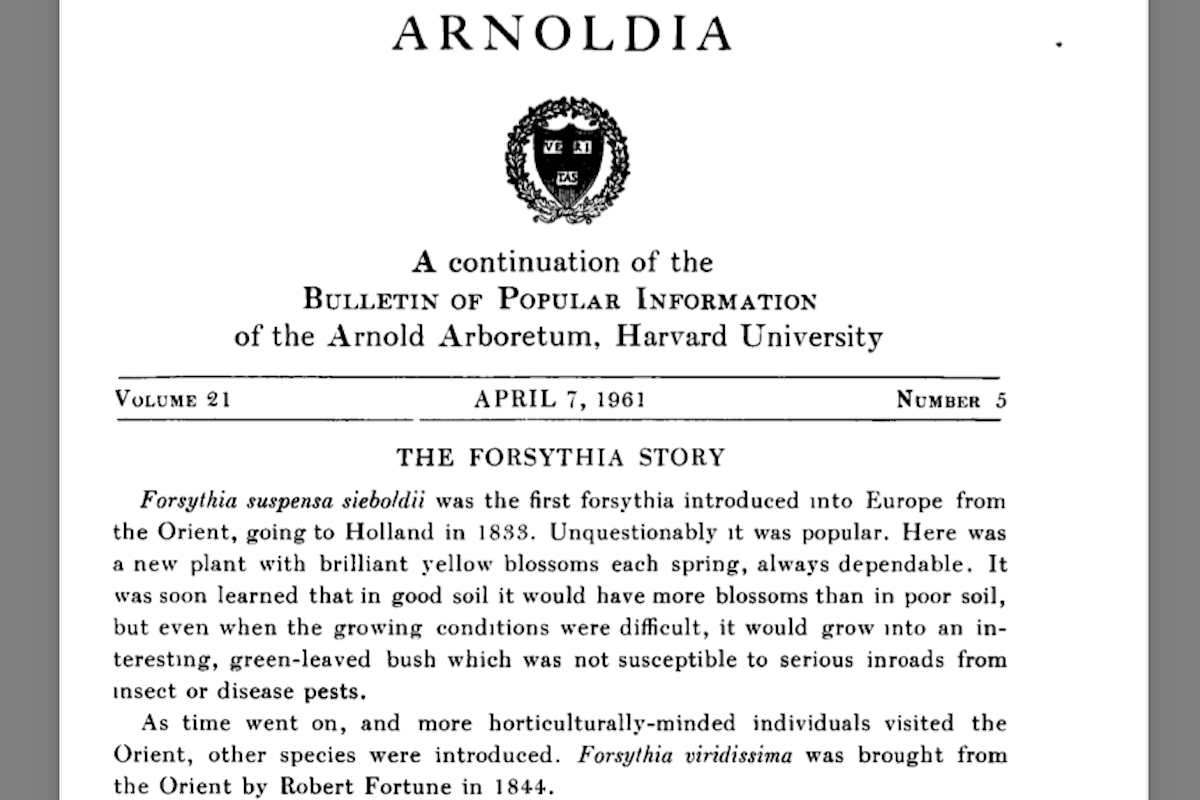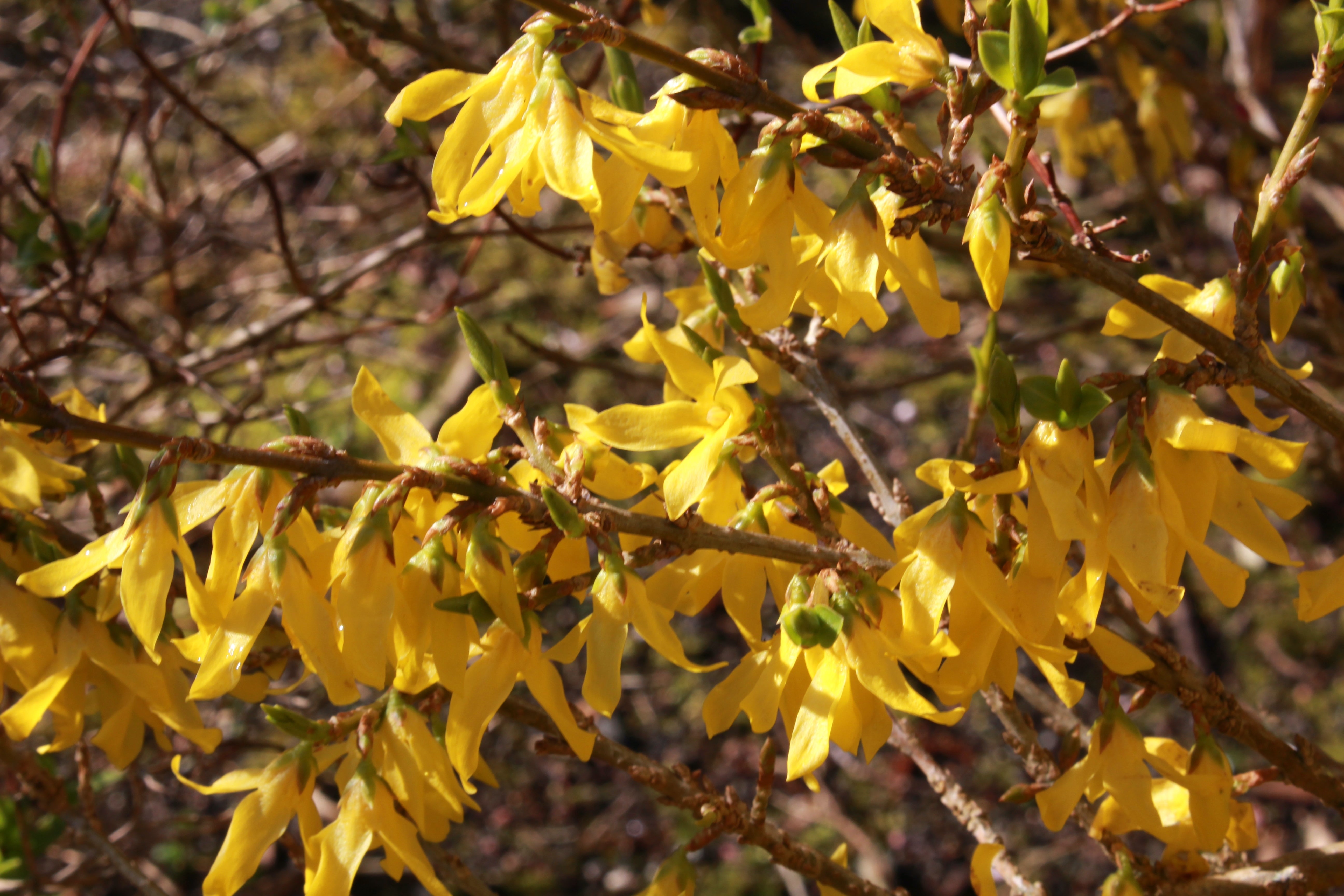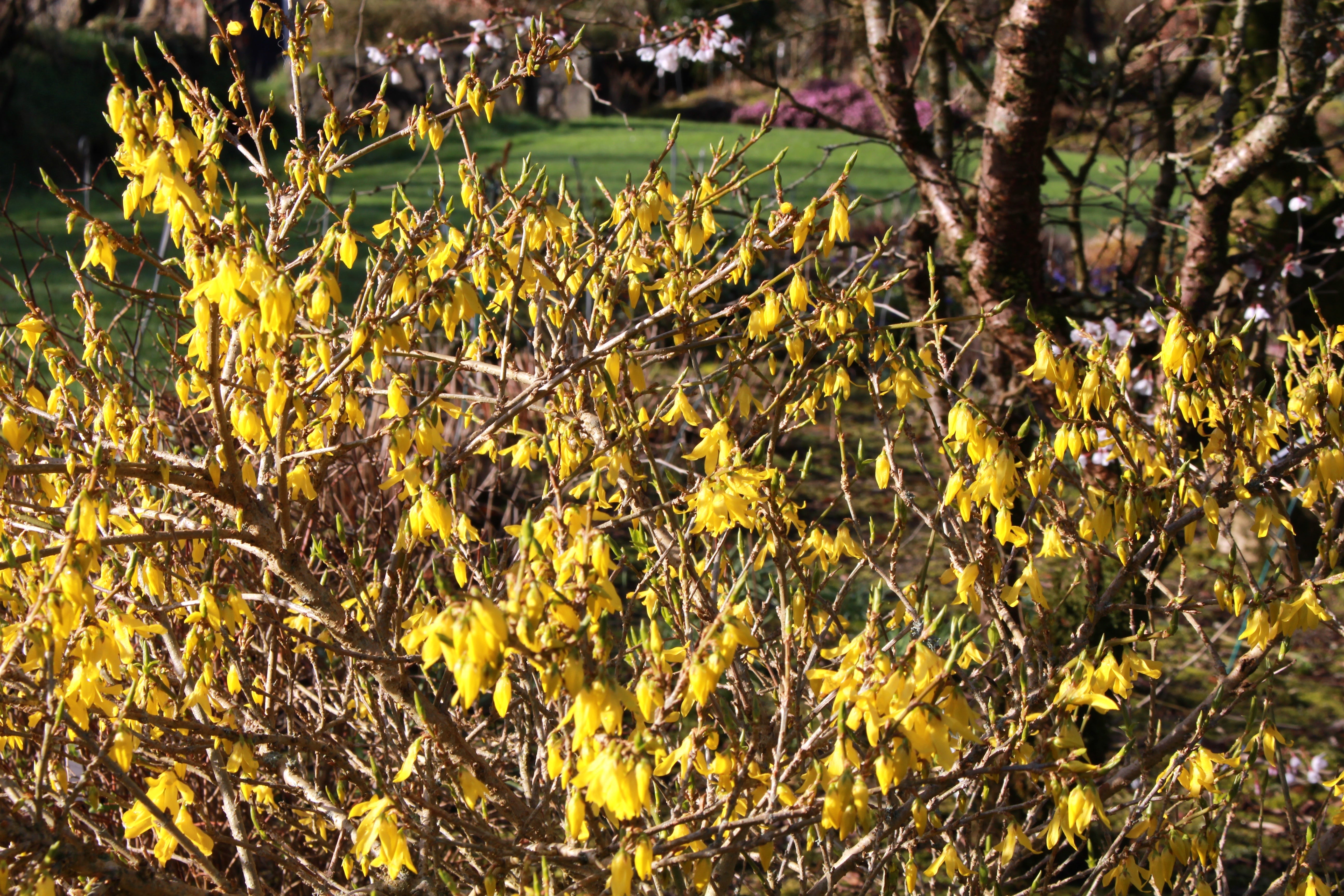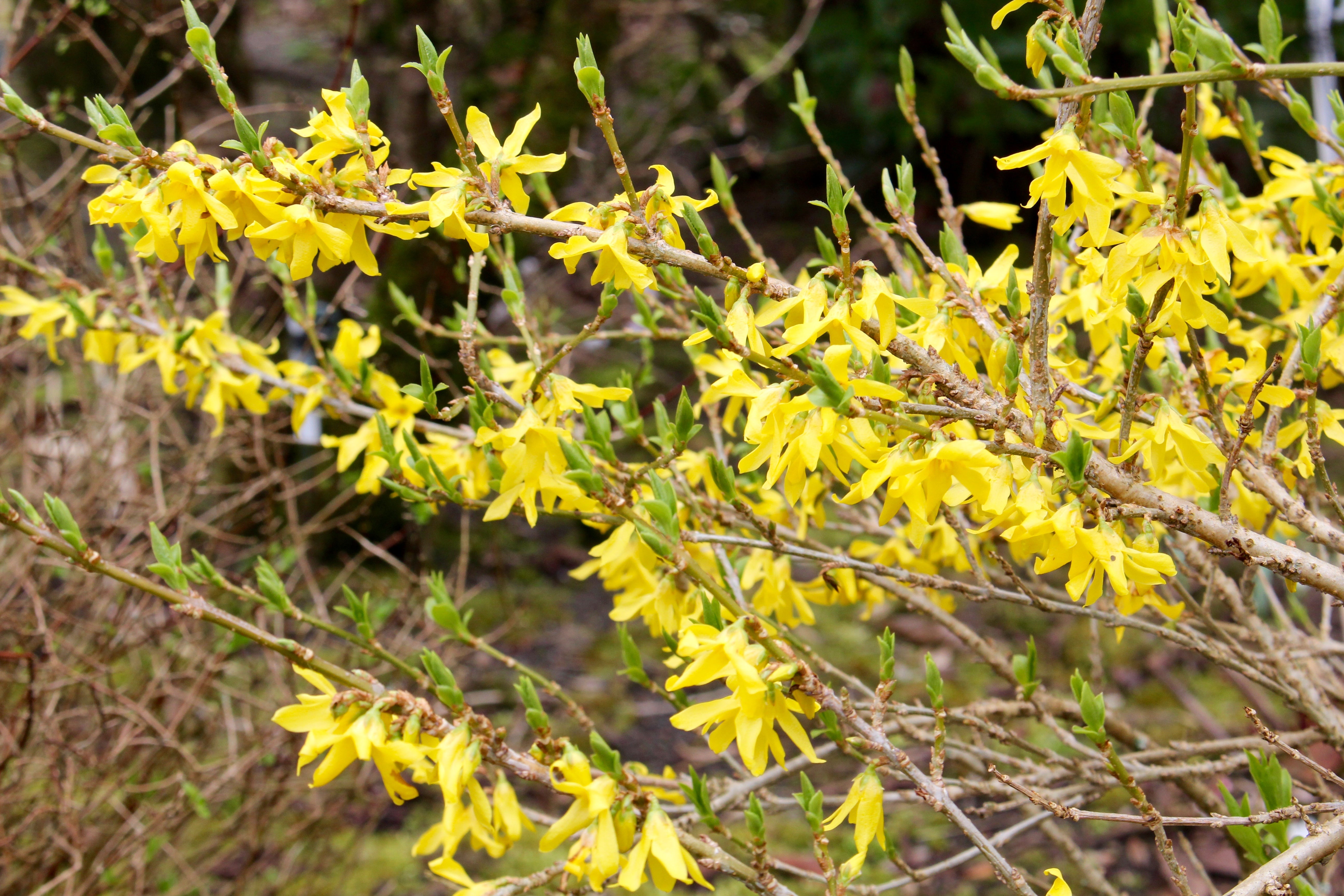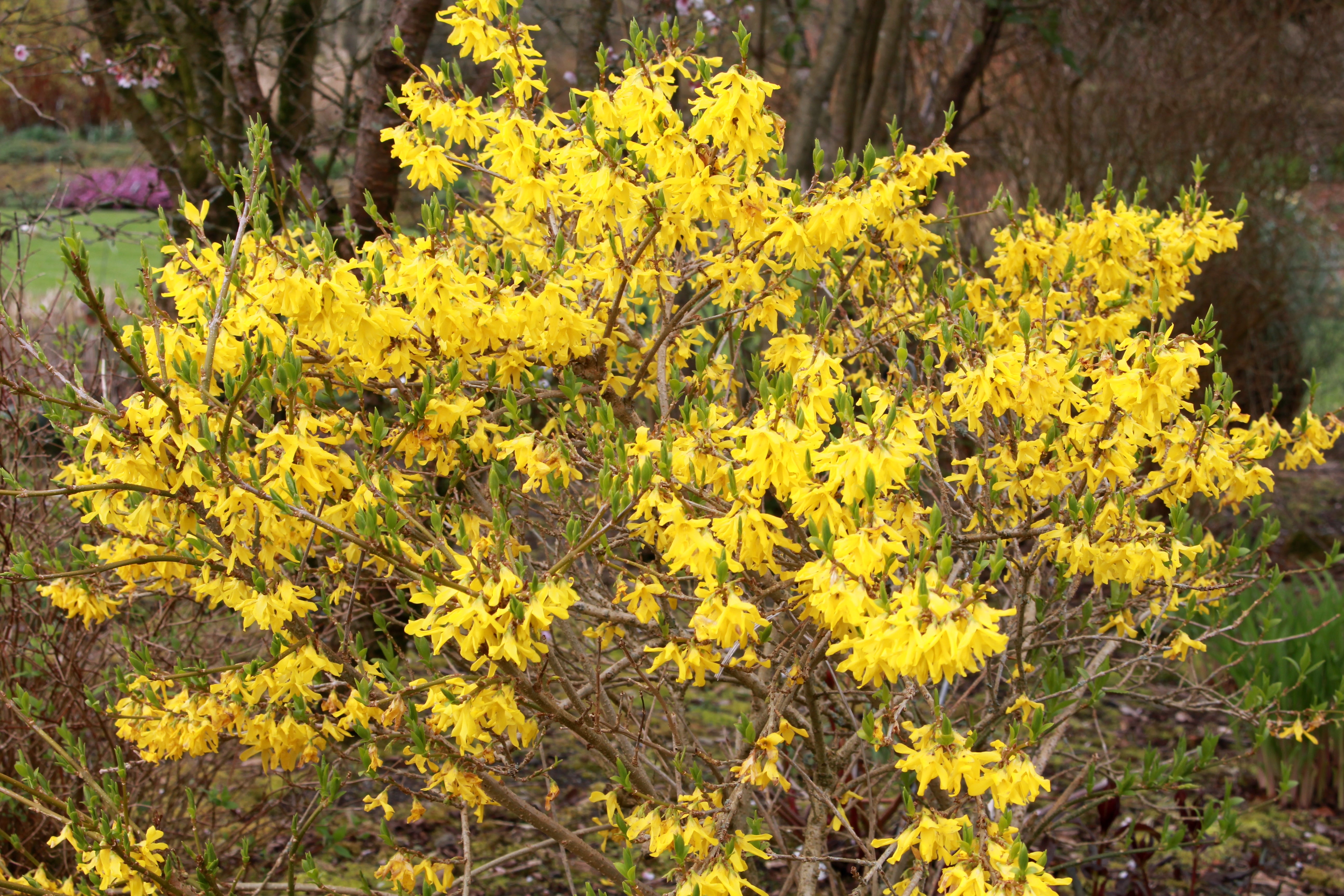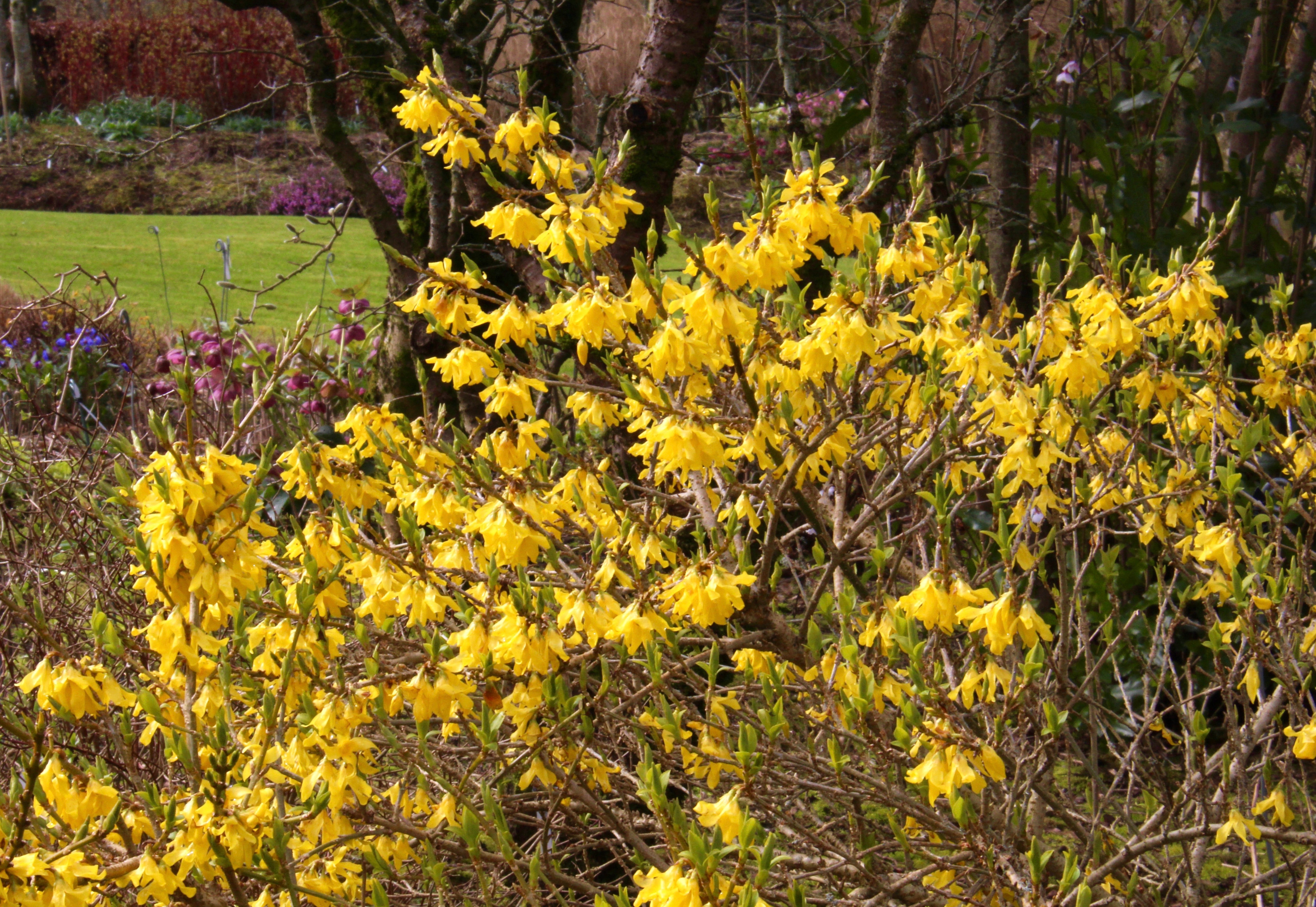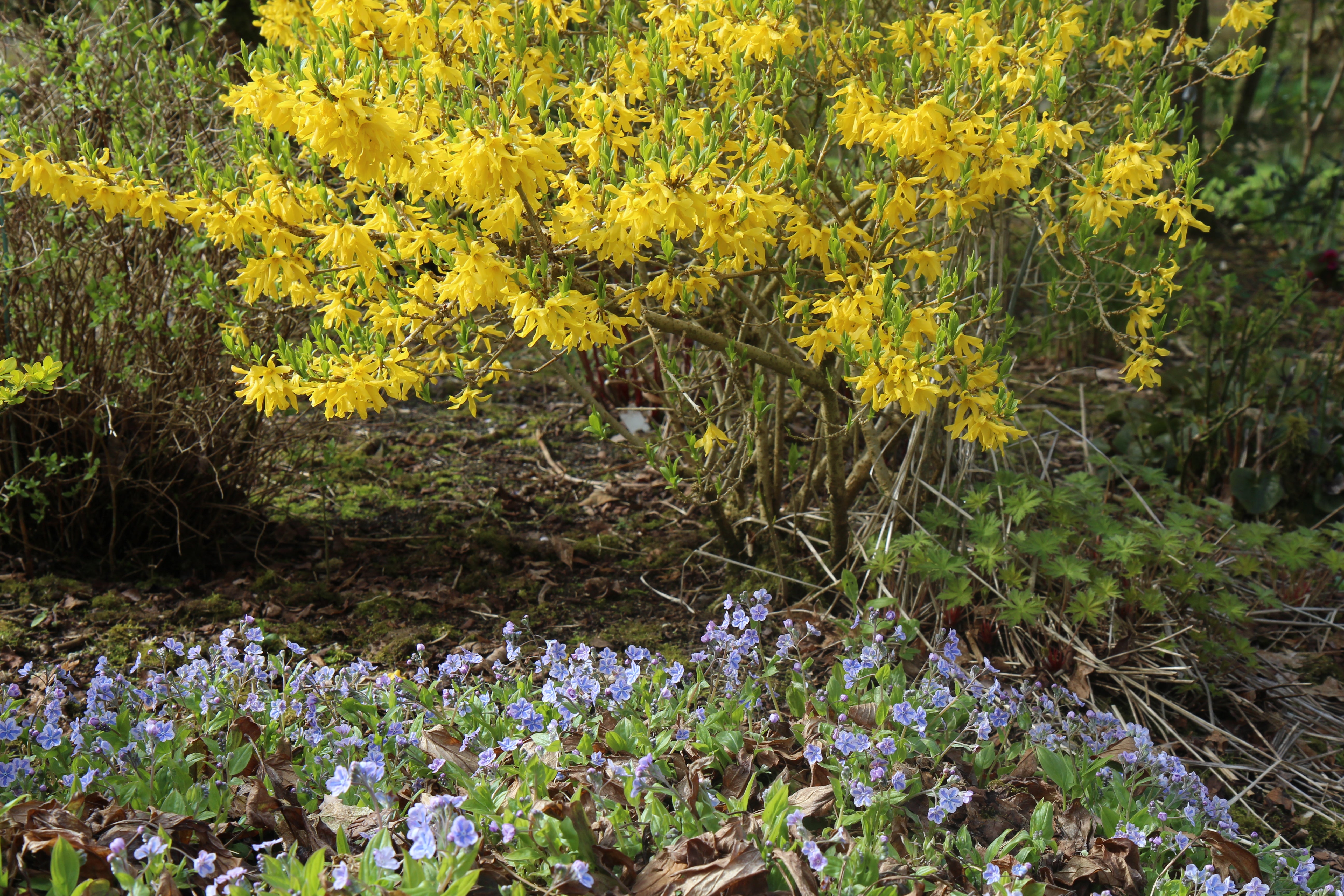Forsythia Marée d'Or = 'Courtasol'
Approx. 0.5 litre pot
About this cultivar:
Forsythia Marée d'Or = 'Courtasol' was first intorduced by French breeder Alain Cadic in 1990, I think via the French National Institute of Agricultural Research in Angers. Selected for its compact, spreading, habit it is different to most commonly available Forsythia.
A deciduous shrub with erect to arching branches bearing lightly fragrant, yellow flowers in late winter and early spring before the leaves emerge. The leaves are lance-shaped and green, fading to a pale auburn yellow in autumn.
- Position: Full sun, partial shade
- Soil: Almost any soil, grows well in Ballyrobert
- Flowers: February, March, April
- Other features: Royal Horticultural Society Award of Garden Merit (RHS AGM), Grows well in Ballyrobert
- Hardiness: Fully hardy - grows well in Ballyrobert! H5 - Hardy in most places throughout the UK even in severe winters (-15 to -10°C)
- Habit: Clump forming, bushy
-
Foliage: Deciduous
- Height: 75 - 100 cm (2.5 - 3.5 ft)
- Spread: 90 - 150 cm (3 - 5 ft)
- Time to full growth: 5 to 10 years
- Plant type: Shrub
- Colour: Green, yellow
- Goes well with: Pair with Ribes, underplant with Omphalodes or Pulmonaria,
About this genus:
Forsythia is a genus of flowering plants in the olive family, Oleaceae. There are about 11 species, mostly native to eastern Asia, but one native to southeastern Europe. The genus is named after William Forsyth (1737–1804), a Scottish botanist who was a royal head gardener and a founding member of the Royal Horticultural Society.
Forsythia are deciduous shrubs typically growing to a height of 1–3 m and, rarely, up to 6 m (20 ft) with rough grey-brown bark. They can be pruned to size, or perhaps cut the longest stems to ground level to contain the height and spread. The leaves are borne oppositely and are usually simple, ranging between 2 - 10 cm with a margin that is serrated or entire (smooth). Twigs may be hollow or chambered, depending on the species. The habits can vary from upright to weeping.
The flowers, usually bright yellow with a deeply four-lobed flower, are produced in the early spring before the leaves. Hence the common name, Easter tree. The flowers can become pendent in rainy weather thus shielding the reproductive parts. The fruit is a dry capsule, containing several winged seeds.
According to Alice Coates in her 1965 book ‘Garden Shrubs and their Histories’ Carl Peter Thunberg was the first westerner to notice the genus in a Japanese garden. He then included it in his 1784 Flora Japonica as Forsythia suspensa. Forsythia suspensa reached Holland by 1833 (see screen shot from 1961 Harvard bulletin). Thunberg was employed as a surgeon with the Dutch East India Company, so that might explain the Dutch destination. Since then, breeding an hybridisation has taken over and most Forsythia grown in gardens these days will be some kind of hybrid.
In the garden they are hardy, easy to prune, floriferous, and easy to grow anywhere that isn’t a swamp or desert. Hence, they are quite gaudy and grown everywhere, some people love to hate their ubiquitous yuccy yellow display. We are not so snobbish and tend to like them around here. They can be a blast of colour when not much else is on show, and sometimes the autumn foliage can be interesting…

